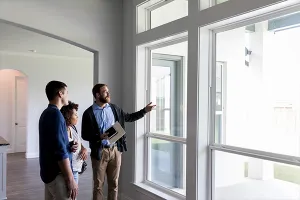The COVID-19/Delta variant pandemic dealt a heavy blow to the office commercial real estate market by way of its impact on employment and with more workers performing their tasks remotely. As of September 2021, 518,000 jobs in office-intensive industries still have to be recovered and 20.3 million workers worked remotely compared to 8.9 million in 2019.
Office and Apartment Occupancy
With nearly half a million office-using jobs lost and with more workers working from home compared to pre-pandemic level, occupancy has fallen by 127 million square feet since the second quarter of 2020 through October 2021. On the other hand, there are 1 million more occupied apartment units since the second quarter of 2020 as of October 2021.
Upon the recommendation of the Real Estate Research Advisory Board under Chair Dawn Aspaas (SD) and Vice-Chair Beth Cristina (LA), NAR Research Group undertook an analysis of how vacant office buildings are being converted into housing.
The first component of the research is an analysis of office-to-housing conversions in 27 markets with the largest decline in occupancy since the pandemic. A conversion is economically feasible if the apartment rent (Class A) is higher than current Office Class B/C rents.

Feasibility of Office-to-Housing Conversions
The analysis shows that 22 out of 27 metros heavily impacted by the pandemic have market conditions that make office-to-housing conversions feasible. In the local markets, apartment rents are higher than office market rents, encouraging office-to-housing conversions, mainly in Class B office buildings. NAR estimates that 43,500 housing units can be created if 20% of the vacant square footage is converted into housing with an average size of 1,000 square feet per unit and with 20% common area. Office Class B building conversions account for 77% of the housing units created. The new housing units account for 6% of annual housing permits.
Metro areas or submarkets with the potential to create at least 2,000 housing units from office building conversions are New York (7,484), Chicago (5,688), Los Angeles (4,200), Orange County (3,065), Boston (2,808), Atlanta (2,799), Philadelphia (2,733), Minneapolis (2,081), and Denver (2,009). Seattle rounds out the top 10 (1,709).
Office-to-Housing Conversion Successes: Case Studies
In the second component of the study, NAR Research analyzed the market conditions and the factors that led to the success of eight office-to-housing conversions in Maryland, Washington DC, New York, California, and Illinois.
The case studies reveal that projects succeeded because of the commitment of local developers and investors with deep ties and experience developing projects in the local market. A clear project purpose and the Identification of the target market (e.g., first-time buyers, luxury, homeless, etc.) is essential as this determines the building’s location and aesthetic yet functional design. The conversions can entail a complex engineering design especially if existing tenants need to remain operational during project construction. Last but not least, community buy-in is essential in getting the project to start and finish on schedule.









